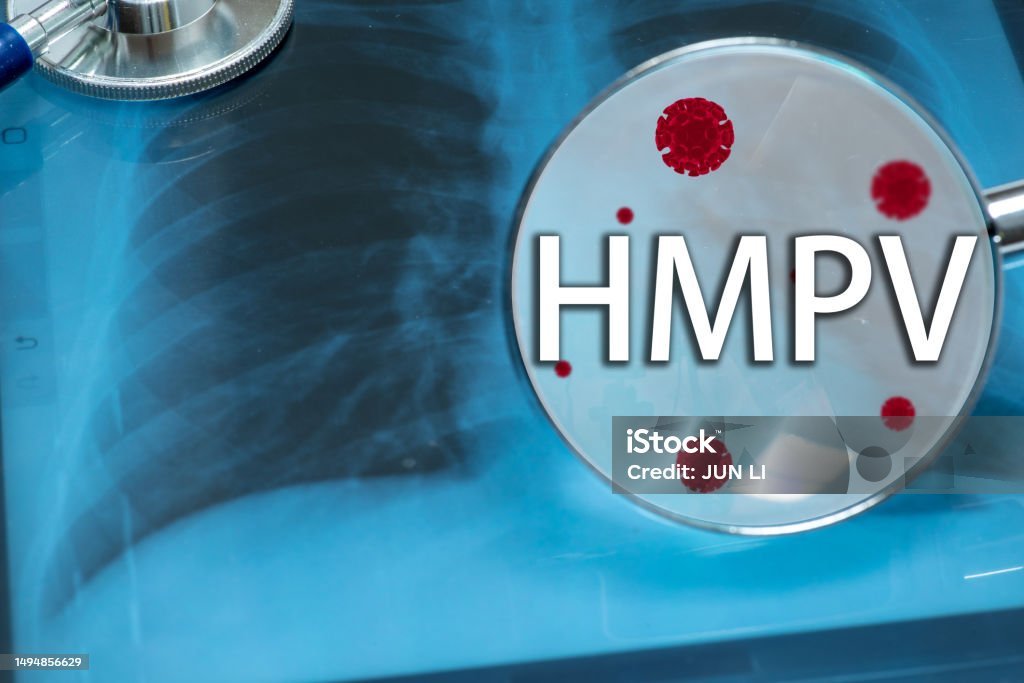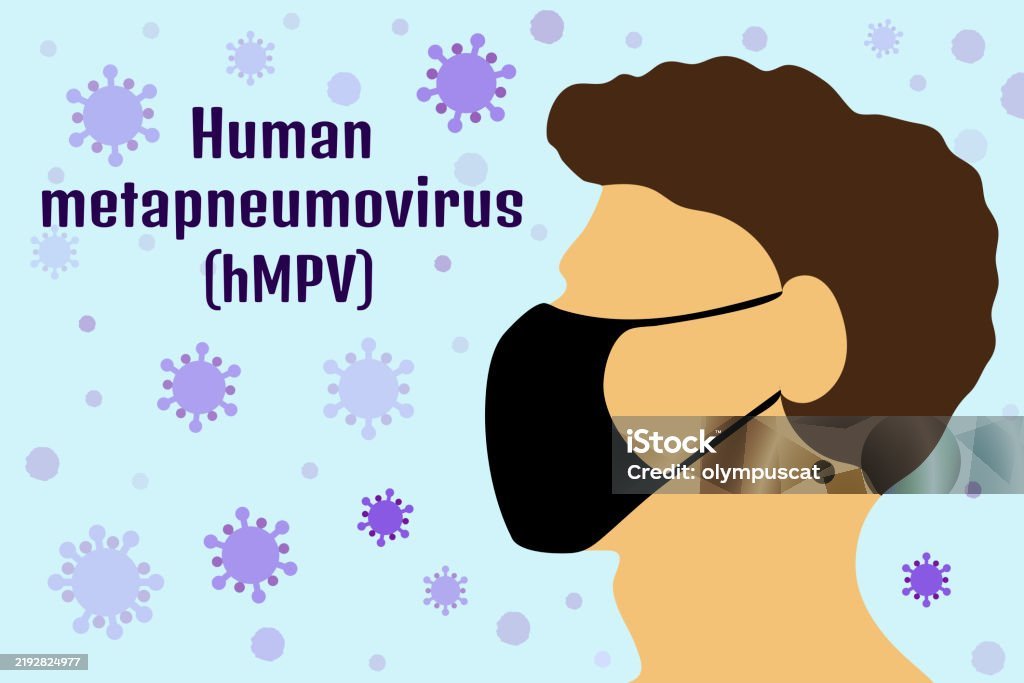The human metapneumovirus (HMPV) is an emerging respiratory virus that poses significant health risks worldwide, particularly to young children, the elderly, and immunocompromised individuals. This virus has garnered global attention for its ability to cause severe respiratory illnesses, including bronchiolitis and pneumonia. Our comprehensive article examines the impact of the HMPV virus in key regions, including the United States, China, India, and Nepal, offering insights into its symptoms, recent case trends, and the challenges faced in combating its spread.
Table of Contents
2025 Winter Storm Warning in the USA – A Powerful Winter Storm to Impact the Midwest and Beyond
Explore detailed information about how HMPV symptoms manifest, including coughing, fever, and breathing difficulties, and learn about the factors contributing to its rapid transmission. The article also highlights the latest trends in HMPV outbreaks, its healthcare burden in different countries, and measures being implemented to prevent and mitigate its effects.
With rising global cases, understanding HMPV is essential for safeguarding public health. Stay informed about this respiratory virus, its impacts on vulnerable populations, and strategies for effective prevention. Whether you’re a healthcare professional, policymaker, or concerned individual, this article provides a vital resource for understanding the current landscape of HMPV and its global significance.
What is HMPV Virus?
HMPV virus belongs to the Paramyxoviridae family and primarily affects the respiratory system. It was first discovered in 2001 and has since been recognized as a significant contributor to respiratory illnesses globally. The virus is closely related to the respiratory syncytial virus (RSV) and often mimics its clinical presentation.

HMPV infections are most prevalent during late winter and early spring. The virus affects individuals of all age groups but poses a higher risk for infants, the elderly, and those with weakened immune systems.
Symptoms of HMPV Virus
The symptoms of HMPV virus vary from mild to severe, depending on the individual’s health status. Common symptoms include:
- Fever
- Cough
- Shortness of breath
- Runny or stuffy nose
- Sore throat
- Wheezing
- Fatigue
In severe cases, HMPV can lead to complications such as bronchiolitis, pneumonia, or exacerbations of asthma and chronic obstructive pulmonary disease (COPD).
HMPV Virus Cases and Impact
HMPV Virus in the US
The HMPV virus in the US has been closely monitored by health agencies like the CDC. Recent outbreaks have highlighted the virus as a growing public health concern. Seasonal surges in HMPV cases are reported, with hospitals often seeing increased admissions of children and elderly patients during peak months.
HMPV cases have been steadily rising in the United States, particularly during the winter and early spring months when respiratory infections are more prevalent. The virus is highly contagious, spreading through respiratory droplets, close contact, or contaminated surfaces.
HMPV poses a significant threat to vulnerable populations, including young children, the elderly, and individuals with compromised immune systems or pre-existing health conditions. Symptoms commonly include fever, cough, nasal congestion, and shortness of breath. In severe cases, it can lead to bronchitis or pneumonia, requiring hospitalization.
Recent outbreaks in the U.S. have placed added pressure on healthcare systems already burdened by other respiratory viruses like influenza and RSV. Although there is no specific antiviral treatment or vaccine for HMPV, supportive care, such as oxygen therapy and hydration, is typically effective. Public health experts emphasize preventive measures like good hand hygiene, respiratory etiquette, and isolating symptomatic individuals to reduce transmission.
The growing prevalence of HMPV underscores the need for increased public awareness, enhanced diagnostic tools, and further research to develop effective vaccines and treatments.
- Impact: HMPV is one of the leading causes of respiratory hospitalizations among children under 5 and adults over 65 in the US. The economic burden includes healthcare costs and lost productivity.
- Trends: Surveillance data shows a year-on-year increase in HMPV activity, underscoring the need for better awareness and preventive measures.

HMPV Virus in China
In China, the HMPV virus has gained attention as respiratory infections surge during seasonal changes. Urban areas with dense populations report higher incidences, with children and older adults being the most affected.
Since mid-December 2024, China has experienced a notable increase in human metapneumovirus (HMPV) infections, leading to crowded hospitals and public concern. HMPV, identified in 2001, typically causes mild respiratory symptoms but can lead to severe conditions like bronchitis or pneumonia, especially in children, the elderly, and immunocompromised individuals.
Health experts emphasize that this rise aligns with expected seasonal patterns. The World Health Organization (WHO) notes that the increase in respiratory illnesses, including HMPV, during winter is typical and not indicative of an unusual outbreak. They confirm that China’s health system is not overwhelmed.
Chinese authorities have reassured the public, describing the situation as a seasonal “winter occurrence.” They advise standard preventive measures such as wearing masks, frequent hand washing, good ventilation, and avoiding crowded places.
While there is no specific antiviral treatment or vaccine for HMPV, supportive care is recommended. Most individuals recover within weeks. Health officials stress the importance of monitoring symptoms, especially in vulnerable populations, and seeking medical attention if conditions worsen.
In summary, the current surge in HMPV cases in China is consistent with seasonal trends. Authorities continue to monitor the situation, emphasizing preventive measures and public awareness to manage the impact effectively.
- Impact: Hospitals in major cities face challenges managing the influx of patients during peak seasons. The virus contributes to school absenteeism and strains healthcare resources.
- Cases: Outbreaks of HMPV in China are often exacerbated by environmental factors like air pollution, which worsens respiratory symptoms.
HMPV Virus in India
The HMPV virus in India is becoming a concern due to the country’s large population and the prevalence of respiratory illnesses. Recently, India has reported a few cases of HMPV, notably in infants from Bengaluru and Ahmedabad. These cases were identified through routine surveillance, and the affected children have either been discharged or are recovering.
Health experts emphasize that HMPV is not a new virus; it has been circulating globally, including in India, since its identification in 2001. The majority of the Indian population has developed immunity against it, and severe disease is considered rare. The Indian Council of Medical Research (ICMR) and the Union Ministry of Health and Family Welfare are closely monitoring the situation. Current surveillance data indicate no unusual surge in influenza-like illnesses or severe acute respiratory infections in the country.
Preventive measures remain crucial. Health authorities advise maintaining good hand hygiene, wearing masks in crowded places, and practicing respiratory etiquette, such as covering coughs and sneezes. These steps are essential in controlling the spread of HMPV and other respiratory viruses. While there is no specific antiviral treatment or vaccine for HMPV, supportive care can effectively manage symptoms.
In summary, while HMPV cases have been detected in India, the situation is under control, with no significant increase in infections. The public is advised to remain vigilant, adhere to recommended preventive measures, and avoid unnecessary panic.
Factors such as pollution and limited healthcare access in rural areas further complicate the situation.
- Impact: The virus is particularly harmful in children and elderly individuals in regions with poor air quality. It adds to the burden of existing respiratory diseases like tuberculosis and asthma.
- Trends: Surveillance data in India indicates underreporting, but hospital-based studies show increasing detection of HMPV cases.
HMPV Virus in Nepal
Human metapneumovirus (HMPV) is a respiratory pathogen causing flu-like symptoms, particularly affecting young children, the elderly, and individuals with weakened immune systems. In Nepal, HMPV has been present for years, with increased activity during winter months. Recent reports indicate a rise in HMPV cases in neighboring countries, prompting Nepal’s Epidemiology and Disease Control Division to initiate testing among patients with influenza-like symptoms who test negative for influenza.
A study conducted at Kanti Children’s Hospital in Kathmandu found that 13.3% of children with acute respiratory infections tested positive for HMPV, with the highest prevalence (21.8%) in those under three years old. Common symptoms included cough, fever, rhinorrhea, sore throat, and wheezing. Diagnoses among HMPV-positive children included pneumonia (42.9%), bronchiolitis (28.5%), upper respiratory tract infections (14.3%), and asthma (14.3%). The incidence was higher in late winter (14.3%) and early spring (13.5%).
Given the similarity of HMPV symptoms to other viral respiratory illnesses, health officials advise against panic but recommend public health measures such as mask-wearing, handwashing, avoiding crowds, and maintaining social distancing to reduce infection risk. Active surveillance and regular testing are emphasized to monitor potential mutations and manage the virus’s impact effectively.
Impact of HMPV Virus Globally
Human Metapneumovirus (HMPV) has emerged as a significant contributor to global health challenges, impacting healthcare systems and economies worldwide. The virus, often associated with respiratory infections, leads to increased healthcare utilization, particularly among vulnerable populations such as young children, the elderly, and individuals with weakened immune systems. Seasonal outbreaks result in higher hospitalizations, overburdening healthcare facilities and creating resource constraints.
Beyond the clinical toll, HMPV contributes to substantial economic burdens due to medical costs, lost productivity, and absenteeism in workplaces and schools. These challenges emphasize the pressing need for robust public health strategies to manage its spread and mitigate its effects.
Currently, the absence of specific antiviral treatments and vaccines for HMPV underscores a critical gap in addressing this public health threat. The virus highlights the importance of advancing diagnostic methods to enable early detection and more effective management. Researchers and healthcare professionals are increasingly focusing on vaccine development to reduce the virus’s impact and safeguard global health.

Addressing HMPV requires a collaborative effort among governments, healthcare providers, and researchers to develop innovative solutions that enhance preparedness, improve treatment options, and ultimately reduce the virus’s global impact.
Prevention of HMPV Virus

Preventing the spread of HMPV requires a combination of personal hygiene, public health measures, and community awareness. Here are key steps to stay safe:
- Practice Good Hygiene:
- Wash hands frequently with soap and water for at least 20 seconds.
- Use hand sanitizers with at least 60% alcohol when soap is unavailable.
- Avoid Close Contact:
- Stay away from people who are sick.
- Avoid crowded places during peak seasons.
- Wear Masks:
- Use masks in high-risk areas or when experiencing respiratory symptoms.
- Strengthen Immunity:
- Maintain a healthy diet, exercise regularly, and get enough sleep.
- Environmental Measures:
- Improve indoor air quality by ventilating spaces and using air purifiers.
- Reduce exposure to air pollution, especially in urban areas.
- Seek Medical Attention:
- Consult a healthcare provider if symptoms worsen or persist.
Conclusion
The Human Metapneumovirus (HMPV) virus is emerging as a growing health concern in regions such as the US, China, India, and Nepal. This respiratory virus is known for causing cold-like symptoms, which can escalate to severe conditions such as pneumonia or bronchiolitis, particularly in vulnerable groups like young children, the elderly, and immunocompromised individuals.
Monitoring the increasing case trends in these countries highlights the need for heightened awareness and preventive action. Efforts to combat the HMPV virus are gaining momentum globally, emphasizing the importance of research, vaccination development, and improved healthcare accessibility to manage its spread effectively. Collaborative international initiatives are pivotal in addressing this respiratory health challenge.
To reduce the impact of HMPV virus, individuals are encouraged to stay informed, practice good hygiene, and adopt preventive measures such as wearing masks in crowded areas, frequent handwashing, and maintaining strong immunity. Recognizing the symptoms early, such as fever, cough, and breathing difficulties, can help ensure timely medical intervention.
As global awareness grows, prioritizing respiratory health and supporting public health strategies are key steps in minimizing the threat of HMPV virus. Stay proactive, informed, and committed to safeguarding your health against this emerging virus.
FAQs on HMPV Virus
1. What is HMPV?
Human Metapneumovirus (HMPV) is a respiratory virus that causes mild to severe infections, particularly in young children, the elderly, and those with weakened immune systems. Symptoms often include fever, cough, nasal congestion, wheezing, and shortness of breath.
2. How is HMPV transmitted?
HMPV spreads through respiratory droplets when an infected person coughs, sneezes, or talks. It can also spread by touching contaminated surfaces and then touching the mouth, nose, or eyes.
3. What is the situation in the US, China, India, and Nepal?
HMPV poses a growing health challenge in these regions due to increased case numbers, limited awareness, and varied healthcare accessibility. Seasonal outbreaks are common, particularly during late winter and spring.
4. How can HMPV be prevented?
Preventive measures include frequent handwashing, avoiding close contact with sick individuals, and practicing respiratory hygiene. Wearing masks in crowded places can reduce transmission.
5. Are there treatments or vaccines for HMPV virus?
There is no specific antiviral treatment or vaccine for HMPV yet. Supportive care, such as hydration, rest, and medications for symptoms, is essential.
6. Why is global awareness important?
Collaboration in research, vaccine development, and healthcare accessibility is critical to addressing the growing threat of HMPV worldwide.

